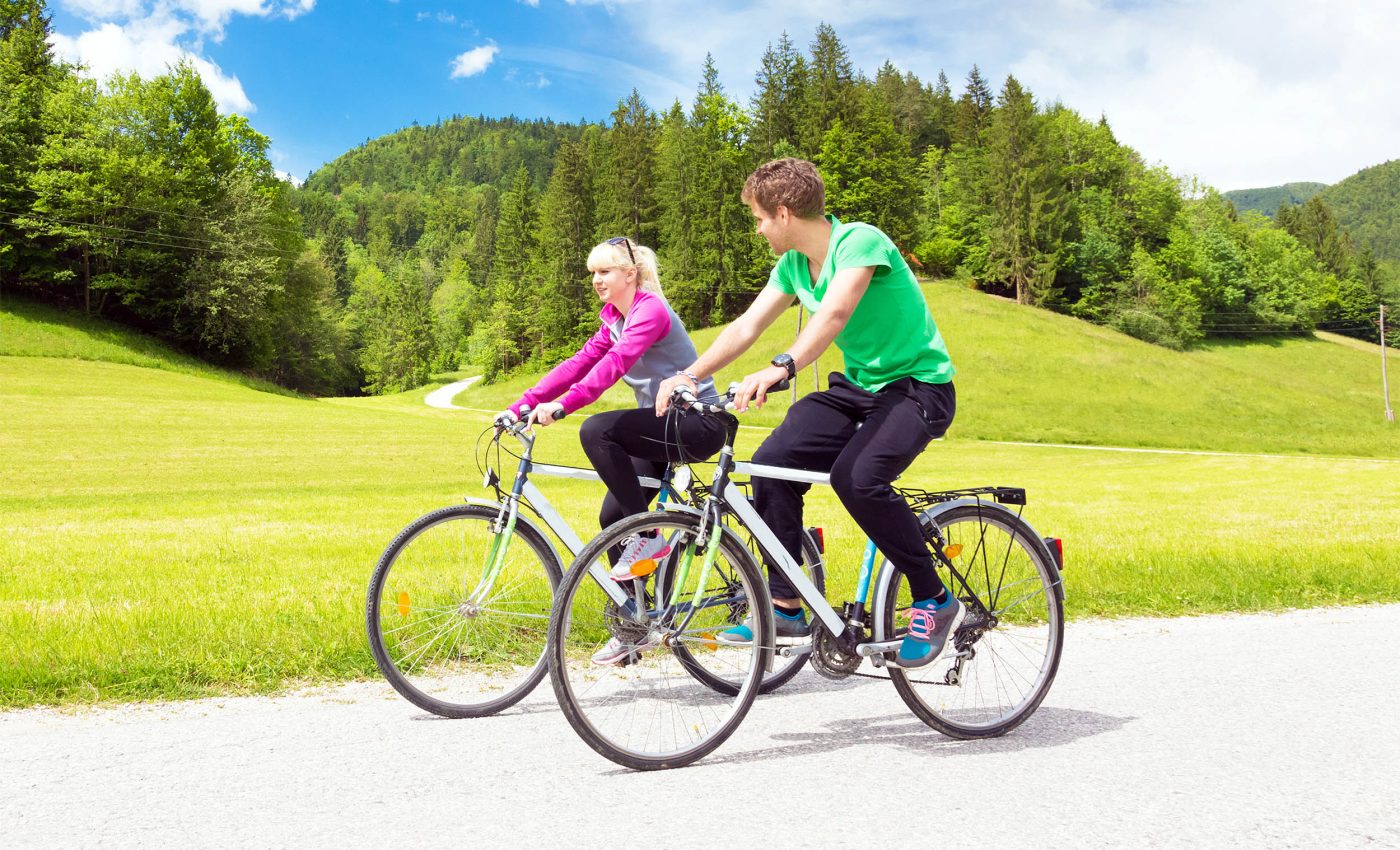
People who ride bikes daily are 50% less likely to die from cancer and heart disease
Most of us learn to ride bikes as children, then gradually move away from cycling as we get older, choosing other forms of exercise to incorporate into our daily health routines. However, we all may want to reconsider that decision.
A recent study that tracked 82,297 commuters for 18 years found that people who chose pedals over engines were about 50 percent less likely to die from cancer or cerebrovascular disease, a term that covers strokes and other blood-vessel problems in the brain.
The same research linked daily cycling with much better health outcomes across the board – a 47 percent drop in deaths from any cause, and a 24 percent decline in cancer diagnoses.
Catherine Friel of the University of Glasgow, who led the project with colleagues from Edinburgh, says the evidence points to cycling as a powerful health habit.
Commuting, cycling, and health
Researchers drew their sample from the Scottish Longitudinal Study, a census-based record that includes people aged 16 to 74.
Participants reported their main commute mode in 2001, creating three groups: cyclists, walkers and non-active travelers.
Hospital admissions, prescription records and death certificates were then linked to each person. This approach allowed the team to calculate the hazard ratio, a statistic that compares the likelihood of an event in one group to another over time.
Covariates such as age, income, prior illness and distance to work were adjusted in the models. By controlling these factors, the analysts aimed to isolate the effect of the commute itself.
Cycling lowers cancer, boosts heart health
Cyclists showed a hazard ratio of 0.53 for all-cause mortality, meaning a 47 percent lower risk than car or bus riders.
They also recorded a 30 percent reduction in prescriptions for cardiovascular disease medications, a practical marker of lower heart strain.
Walking to work helped too, but less dramatically. Pedestrians lowered their odds of any hospital stay by 9 percent and their need for heart-related drugs by 10 percent. The smaller edge likely reflects shorter distances and gentler intensity.
“Clearly and consistently lower risks of adverse outcomes were identified among active commuters,” stated Friel. The pattern held across age groups and income brackets.
Mental health matters too
Prescription data revealed a 20 percent dip in anxiety and depression medication among cyclists. Walking offered a modest 7 percent benefit. Physical activity stimulates brain chemicals that lift mood, which explains part of this trend.
Commuting under one’s own power can also reduce daily stress by eliminating traffic jams and offering social contact on bike paths. These softer factors, though more difficult to quantify, likely add to the mental boost.
Road risks must be considered
The downside is safety. Cyclists in the study were nearly twice as likely to be hospitalized after a traffic crash. Over the full 18 years, 83 serious injuries were recorded among riders.
“Existing studies confirm that the health benefits far outweigh the risk of injury,” said Luis Cereijo Tejedor of the Autonomous University of Madrid, who was not involved in the work. He called for better bike lanes and lower urban speed limits to narrow the gap.
Even with the injury burden, the mortality advantage persisted. That result echoes earlier U.K. research that tracked 300,000 people for 25 years, and that also showed cycling was protective despite occasional crashes.
Cycling beats walking for longevity
Cycling typically covers longer distances than walking, pushes the heart rate higher and can replace sedentary car trips entirely.
A six-mile (9.7-kilometer) ride, common in Scottish cities, meets the 150-minute weekly exercise target in just a few commutes.
Riders also avoid the stop-and-go traffic that limits brisk walking in crowded downtown cores. Consistent moderate effort, rather than short bursts, appears to drive the biggest cardiovascular gains.
E-bikes may widen access by flattening hills and reducing sweat. Early studies suggest electrified cycling still counts as moderate exercise because riders pedal continuously, albeit with assistance.
Policy implications
Governments seeking to cut medical costs see active travel as a low-budget intervention. The Dutch mileage subsidy of $0.24 per kilometer and the French rebate of up to $930 per year have nudged thousands onto bikes.
Scotland plans to spend about $400 million annually on bike and walking infrastructure by 2026. Friel’s data offer local proof that such investments pay off in health savings as well as carbon cuts.
Remote work complicates the picture. Fewer commutes mean fewer chances to exercise in transit, so planners now talk about “everyday mobility,” encouraging errands, school runs and leisure trips by bike.
Small cycling shifts, big health gains
Not everyone can pedal the full distance to work, but mixing modes helps. Parking the car a mile away or leaving the bus two stops early still adds regular activity.
Shifting even 10 percent of daily trips to bicycles could save thousands of lives, according to modeling studies from England and Wales. Each avoided chronic disease means fewer hospital beds and lower insurance premiums.
Urban designers note that safer streets benefit walkers and wheelchair users too. Wider sidewalks, raised crossings and protected lanes create environments where active travel feels normal rather than heroic.
The study is published in BMJ Public Health.
—–
Like what you read? Subscribe to our newsletter for engaging articles, exclusive content, and the latest updates.
Check us out on EarthSnap, a free app brought to you by Eric Ralls and Earth.com.
—–













